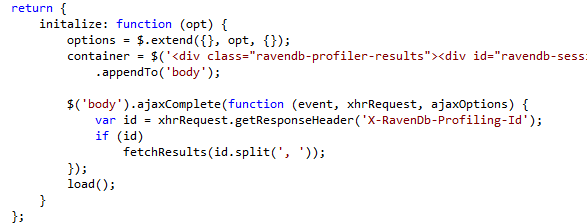Matthew Bonig asks, with regards to a bug in RavenDB MVC Integration (RavenDB Profiler) that caused major slow down on this blog.:
I'd be very curious to know how this code got published to a production environment without getting caught. I would have thought this problem would have occurred in any testing environment as well as it did here. Ayende, can you comment on where the process broke down and how such an obvious bug was able to slip through?
Well, the answer for that comes in two parts. The first part is that no process broke down. We use our own assets for final testing of all our software, that means that whenever there is a stable RavenDB release pending (and sometimes just when we feel like it) we move our infrastructure to the latest and greatest.
Why?
Because as hard as you try testing, you will never be able to catch everything. Production is the final test ground, and we have obvious incentives of trying to make sure that everything works. It is dogfooding, basically. Except that if we get a lemon, that is a very public one.
It means that whenever we make a stable release, we can do that with high degree of confidence that everything is going to work, not just because all the tests are passing, but because our production systems had days to actually see if things are right.
The second part of this answer is that this is neither an obvious bug nor one that is easy to catch. Put simply, things worked. There wasn’t even an infinite loop that would make it obvious that something is wrong, it is just that there was a lot of network traffic that you would notice only if you either had a tracer running, or were trying to figure out why the browser was suddenly so busy.
Here is a challenge, try to devise some form of an automated test that would catch something like this error, but do so without actually testing for this specific issue. After all, it is unlikely that someone would have written a test for this unless they run into the error in the first place. So I would be really interested in seeing what sort of automated approaches would have caught that.







![image_thumb[1] image_thumb[1]](http://ayende.com/blog/Images/Windows-Live-Writer/Bug-Hunt-What-made-this-blog-slow_FB72/image_thumb%5B1%5D_thumb.png)














